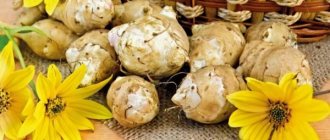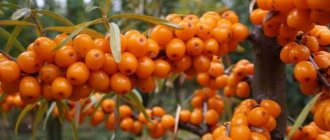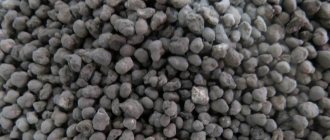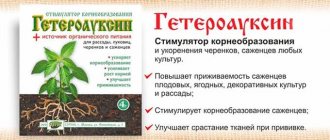Tibetan lofant instead of Korean ginseng
04.2015 @Wergin No comments
Tibetan Lofant is officially listed in the pharmacological list of medicinal flora and, undoubtedly, is of interest for cultivation not only as a home healer, but also as a beautiful flowering plant for decorating flower beds.
The correct name for this perennial crop from Asia is Agastache rugosa, popularly known as Korean mint. The herbaceous shrub is often confused with its relative in the Lamiaceae family, the North American Lofant anise, otherwise known as the fennel plant (Agastache foeniculum), an equally useful and revered plant in many branches of human activity.
Agastachys rugosa is endowed with a pleasant anise aroma, its leaves with spike-shaped inflorescences are quite edible in Russian cuisine and look like nettles with their erect bushes growing no more than 120 cm in height.
Tibetan lofant grows quite comfortably in gardens under trees and serves as an excellent supplier of insect pollinators for them, being an excellent honey plant.
To decorate an outdoor flower garden or front garden, a reasonable solution would be to use imported selection of agastachys, for example: Golden Jubilee, Black Adder, Alabaster, Honey Bee or Blue Fortune , bagged seeds of which can often be found in domestic specialized stores. Each variety is distinguished by large spike-shaped inflorescences about 20 cm long, revealing their small flowers from July until frost. Of course, in a fertile and well-lit area, varietal Korean mint plants will develop an order of magnitude more productively than those planted under fruit trees.
Agastachis wrinkles. "Black Adder"
This beautifully flowering plant is not picky about soil, is unpretentious in maintenance, and even young people can grow rugose agastachys from seeds. To do this, it is advisable to use the seedling method, sowing lofant in mid-March in seedling cups and thoroughly watering the soil substrate with a growth biostimulator using Zircon, Epin-extra or sodium humate.
The first shoots begin to germinate on the 5th day, and it is not necessary to equip them with a mini-greenhouse. Subsequently, the strengthened seedlings are transplanted to the planned places for growing lofant in planting holes according to the 0.5 m x 0.5 m pattern.
As a medicinal raw material, Korean mint represents the entire above-ground part of the medicinal plant. The first season of its cultivation is not so productive and allows only a one-time cutting of the apical leaves on the herbal bush in early September, subject to normal flowering. But in the second year of growing Korean mint, from plants that quickly grow leaves, you can already produce two cuttings of medicinal and spicy green raw materials.
It is advisable to do the first collection of the apical parts in July, when full flowering and pollination of the crop occurs. Using scissors or pruning shears, the bushes are simply shortened by a third of their height and the resulting flower and leaf mass is dried by ordinary natural dehydration - under a canopy or on a glazed veranda.
After cutting, the Tibetan lofant actively forms stepsons in the axils of the remaining leaves and grows again luxuriantly, which makes it possible to again harvest plant materials in September.
Korean mint greens are very rich in the content of biologically active substances, vitamins and phytoncides, useful for normalizing metabolism in the human body, breaking down and removing toxins, radionuclides and toxic salts. Agastachys rugosa in the medical community is equated to Korean ginseng and Eleutherococcus senticosus in terms of the positive effect it has from its use in the treatment of serious diseases associated with internal organs.
In the vast expanses of Asia, the plant is widely used in cosmetology, where the inflorescences and leaves serve as the basis for the production of anti-aging face creams.
Tibetan lofant gives good freshness to the oral cavity - just chew a freshly picked leaf of the plant.
The versatility of the use of Korean mint is determined by its ability to perfectly increase and strengthen the immune system, which conventionally classifies this medicinal plant in the class of natural “energy drinks.”
Collection and preparation
The aerial part of the plant is used for medicinal and cosmetic purposes. In the first year, lofant shoots are cut once in mid-July. Next year, you can collect and prepare Korean mint twice: in July and September.
The medicinal plant should be harvested in dry and hot weather. It is these conditions that make it possible to obtain shoots that are maximally saturated with useful substances. Cut plant stems must be properly prepared:
- pruning is carried out with a clean, sharp pruning shears at a height of 10-15 cm from the ground;
- the stems are cleared of leaves and flowers;
- cut shoots are tied together into bundles;
- drying of the lofant takes place in a dark, dry room;
- To preserve essential oil, it is necessary to place the raw material in a sealed glass container.
Decoctions, aromatic teas and baths are prepared from the dried stems of the Tibetan plant. Dry lofant branches can be placed in a pillow or made into a sachet. Honey collected from crop plantings is highly valued. The plant is used in cooking as a seasoning.
Growing Tibetan lofant does not require special skills or effort. An ornamental shrub allows you to enjoy long-lasting flowering, a pleasant aroma and use the healing properties of natural ingredients for your home medicine cabinet.
Agastachys rugosa (Tibetan lofant), cultivation and care
This plant with a specific mint aroma has been grown by Tibetan monks since ancient times and was revered for its exceptional properties.
Today, rugose agastachys, which has ceased to be exotic, inhabits the gardens of European connoisseurs of medicinal herbs and fans of traditional medicine. It does not require special conditions and is unpretentious, so even an inexperienced gardener can grow such a crop.
Description of Tibetan lofanta, what agastachis looks like (photo)
Agastachis is often called Tibetan lofant, Asian lofant, Tibetan polygonum, Korean mint or wrinkled polyglot. It really looks like mint due to the similar shape of the inflorescences and the unusual rich aroma.
Description of Korean mint
Lofant is a perennial plant, something between a grass and a shrub. It grows up to 100 cm in length and up to 60 cm in width.
Agastachis has tetrahedral stems overgrown with petiolate oval leaves reminiscent of nettle foliage. Their edges are jagged in places. The length of the sheet is 70-100 mm.
Tibetan lofant, which can be grown in any garden, blooms in July and ends flowering at the end of August. Flowers with long stomata are collected in dense spikelets about 15-20 cm high, and are white or violet-purple. They give off a characteristic anise aroma. Bisexual flowers are pollinated independently or with the help of insects. Bees adore them: if you plant a hectare of land with rugosa agastachis, you can collect 600-700 kg of honey in a year.
The fibrous roots of the plant easily survive frosty winters with temperatures down to -30°C, the green part can withstand frosts of 5-10 degrees below zero.
In the wild, lofants grow on the Tibetan, Japanese and Himalayan mountains; they love the sunny valleys of Korean, Siberian and Chinese lands.
Asian lofant, or wrinkled polygonum, with foliage resembling nettles and flowering spikelets resembling mint, looks like this:
Agastachys rugosa (Tibetan lofant), cultivation and care
What does agastachys look like photo
Agastachys rugosa
Origin and description of culture
The perennial herbaceous plant is known by such names as Korean mint, agastachys, and rugosa. The homeland of the Tibetan lofant is Central Asia. Since ancient times, monks have paid attention to the healing properties of infusions from the stems of the plant. Later, lofant became widespread in the countries of East Asia, Siberia and Japan.
The height of the bush ranges from 80 cm to 120 cm. The erect stems are covered with oval-shaped petiolate leaves with sharp edges. The length of the leaf plate is 7-10 cm. White petals are located on spike-shaped inflorescences. The root system of lofant is fibrous. Tibetan grass can withstand temperatures down to -15-20°C.
It is important not to confuse the plant with the anise lofant, which is similar in description. A distinctive characteristic of Tibetan is only white inflorescences. In other varieties, the petals are colored violet, purple, and blue.
Article on the topic: White mustard (English) - beneficial properties, description
Growing Tibetan lofanthus
How to grow lofant seedlings
Preparation of achenes
Before sowing Korean mint seeds for seedlings, we prepare for disinfection and activation:
- We put the achenes in a napkin and moisten it in a pinkish solution of potassium permanganate. After half an hour, dry them.
- We place the seeds in the refrigerator for 24 hours, at the very top, so that the seeds hatch faster.
We plant the finished achenes in boxes with a light substrate or peat tablets.
Sowing seeds
Agastachys rugosa can be sown for seedlings in different ways:
Sowing in a box with soil
At the end of March - beginning of April, fill the container with light soil and do the following:
- If the soil is garden soil, we spill it with hot water to disinfect it.
- We make grooves about 5 mm deep.
- Pour in the seeds.
- We carefully water from a watering can designed for watering indoor plants. The water will draw the seeds into the soil.
Lightly sprinkle the crops with dry soil: a thick layer will prevent the tiny seeds from quickly pecking, and cover with polyethylene.
Sowing in peat tablets
In mid-March, we sow the grains in peat tablets - 4 pieces each. on one, put them in a container and cover with polyethylene.
Agrotechnical requirements
In its natural habitat, agastachys prefers to grow on sandy soils in mountainous areas. The soil for growing Tibetan lofanthus in the garden is light, loose, and moderately nutritious. It is important to provide the culture with drainage and neutral soil acidity. On soils fertilized with compost and mineral additives, the plant develops better.
The perennial needs sufficient lighting. In the shade it loses its decorative effect, grows slowly and produces few flower stalks. Fragrant bushes are planted near gazebos, the entrance area or in the center of a flowering bed. After 5-6 years, Korean mint must be moved to a new location.
A special requirement when planting and caring for Tibetan lofant is abundant watering, accompanied by loosening the soil and weeding. Lack of moisture and the formation of crust on the surface of the bed negatively affect the condition of the perennial.
Cutting and storing Tibetan polygonum
Collection of raw materials
In the first year of life, we collect lofant for medicinal purposes only once, leaving a bush 35 cm high. The first pruning occurs in July. In the second year, we cut twice - in mid-summer and in autumn, when the seeds ripen. In autumn, we leave bushes no more than 15 cm high.
It is necessary to collect the grass in hot, dry weather, when the most essential oils accumulate in it. We cut the stems with a sharp knife, pluck the flowers and foliage.
Cutting and storing Tibetan polygonum
Drying and storage
We dry the collected greens and flowers of agastachys, like any medicinal raw material, in a shaded area that is well ventilated.
We store dry herbs in glass containers with screw-on lids to prevent essential oils from evaporating. It is stored for 2 years.
Agastachis rugosa is a real find not only for beekeepers trying to get as much honey as possible. This is an excellent ornamental plant that can decorate any area, and an excellent medicinal raw material that helps with various diseases. You can also make aromatic, delicious tea from it by collecting the leaves until winter. The main thing is to grow healthy seedlings, and after planting in the ground, the lofant will quickly gain strength and turn into many lush, beautifully flowering bushes!
Planting dates and technology
Korean mint can be propagated by cuttings or root division. The most popular way is by seeds. Gardeners practice the seedless growing method and note high seed germination, which lasts for three years.
It is necessary to grow Tibetan lofant seedlings in regions with harsh winters and cool summers. The seeds sprout vigorously on the 5-6th day after sowing. The soil and planting material must first be disinfected with a manganese solution.
Seedlings should be planted in the garden after the air temperature has reached +10-15°C. Recommended technology for planting Tibetan lofanthus:
- It is advisable to add wood ash to the holes for seedlings;
- the planting depth should correspond to the size of the root system, as a rule, it is 6-8 cm;
- distance between plants – 25 cm. Row spacing – at least 60 cm;
- plantings should be shed generously with water.
Elongated, thin seedlings must be provided with support. With sufficient lighting, lofant seedlings will grow stronger within 1-2 weeks.
About Agastakhe (aka Lofant). My "investigation"
For convenience, I numbered them and began to study the issue.
You can see offhand that on No. 1 and No. 2 it is written that the mint is Mexican. No. 2 and No. 5 are mixtures. No. 4 and No. 7 - it is written that the mint is Korean. No. 3 and No. 4 are suspiciously similar to each other. No. 3 - some kind of mint Golden Jubilee No. 6 - some kind of mint Burning sunset.
Let me clarify right away that I needed Lofant, which has medicinal properties.
(for tea), and that’s why I went online for information to find out which lofant of the ones I bought I needed.
The first source is Wikipedia. Wikipedia offers this list of the main species of Polygonum/Agastache/Lophant.
Of this entire list, there is a link with information about only one Lofant - Polygonum rugosa. I follow the link and this is what it says:
Yes, that seems to be what I'm looking for. Brief summary: Polygon, aka Lofant, aka Agastakhe.
Its
medicinal variety
,
Agastache rugosa
/ Wrinkled polygonum / Tibetan lofant / Korean mint /
This species is considered the only medicinal species of Lofant, the rest are decorative. There is also anise - but more on that a little later.
Among my seeds, only two are called “Korean mint” - No. 4 and No. 7. But No. 4 is very similar to No. 3, so how can I distinguish “Korean mint” from other varieties of lofant? And what other types of lofant do I have, how can I use them? I went looking for further information.
I found the website https://lofant.ru/. There is a description of only Lofant of Tibet, and all my seeds fit this description (except for No. 6, it has red flowers).
Further, the classification of lofants begins to get confused. They begin to be “divided” according to their own interests.
The only types of lofant (besides Tibetan), which sometimes coincide with some “classifiers” and Wikipedia, are: * Lofant urticifolia - nettle-leaved * Lofant rupestris - mountain * Lofant foeniculum - fennel * Lofant mexicana - Mexican
And at this stage another variety of lofant appears - * Lofant anisata - anise
The most interesting thing is that the descriptions of even the same species are different from different sources. For example:
1. Here is a description of the following species: - Mountain Lofant
(Agastache rupestris) - they just refer to seeds from NK - my No. 6
- Fennel
and
anise
(Agastache foeniculum and Agastache anisata) - for some reason they combined two different species into one species, and also added seeds from NK "Golden Jubilee" " - my number 3.
And judging by the picture, this yellow something (golden anniversary?) is already growing for me. So it is still fennel or anise. — Gray lofant
(Agastache cana) — I haven’t come across a mention of such a lofant anywhere else, but let’s say there is one.
— Nettle-leaved lofant
(Agastache urticifolia) — description and pictures are incredibly similar to my “Mexican” ones No. 1 and No. 2)
2. Here is a slightly different classification of lofants: - Lofant barbera
- Agastache barberi (with orange flowers)
- Mountain lofant
- Agastache rupestris.
They also write that seeds from NK - No. 6 - this is it. — Mexican lofant
— Agastache mexicana.
But here it’s interesting) The picture accompanying the text is similar to the picture on the seeds (No. 1 and No. 2), but the description says that the flowers of one of the varieties are “carmine red or bright pink.” and it’s unclear, what other flowers are there and how to distinguish it from the rest? Wrinkled lofant
- Agastache rugosa
= Agastache anisata.
And here the anise lofant has been woven into the Tibetan one, and not into the fennel one (although these are completely different varieties of lofant).
Interesting Facts
There are many interesting facts known about mint:
- Mint leaves and honey fight off the smell of alcohol.
- A mint leaf in your wallet brings good luck in finances, as the belief goes.
- Regular consumption of mint prolongs life.
- It is believed that if you stuff your pillow with mint leaves, you will only have positive dreams.
- Historical references indicate that mint was known before our era. Mint was even found in the tombs of the pharaohs of Ancient Egypt.
- Mint perfumes have been made for a long time; the first of them appeared in Jerusalem.
- In Italy, mint is added to wine to make the drink fresher.
Video: mint on the window
Mint is an amazing plant that is actively used by people in different areas of life. The plant is used in cooking, medicine, weight loss, cosmetology, aromatherapy, etc. Remember that mint helps relieve pain, calm the nervous system and dull the appetite.
Share this page with your friends!
Anise comb, Giant hyssop, Anise hyssop, Great blue hyssop
And they are trying to “unite” it with Tibetan, and with fennel, and with nettle-leaved. Overall a complete mess)
So what is he? The only source explaining where this aniseed hyssop came from writes this (and even then without proof!):
But all the same, I still don’t understand what variety this anise lofant was bred from and whether it can be used in the same way as the Tibetan one. And how to distinguish them all from each other. And what kind of seeds do I have, after all?
It is more or less clear that No. 6 is 99% Lofant Mountain. And that’s not a fact, but let’s assume.
The questions remaining are:
1. Are lofant No. 1 and No. 2 Mexican? How to distinguish it from the rest? 2. No. 3, Golden Jubilee, is this fennel lofant or anise lofant?
Photos of my “yellow lofant”
3. And what is anise lofant anyway? What type of lofant did it come from and does Tibetan lofant have medicinal properties? How to distinguish it from the rest? 4. No. 4 and No. 7 are these really Korean mint (Tibetan lofant)? 5. What is mixture No. 5?
The answers to these questions are extremely important to me, because... I have to know EXACTLY what kind of herb I will dry and brew into tea.
Help from the audience is VERY welcome!)))
UPD 1
: Found another link. Here, the entire lofant is divided according to its growth (into Asian and North American), i.e. into Tibetan and Anise(.). At the same time, Anise was combined with nettle leaf and Mexican at the same time. And they write that it is Tibetan that is medicinal and that it is white. As proof, a certain Directory “Flora of the North American Continent” is given. I didn’t find anything like this by searching on the Russian-language Internet.
UPD 2
: I also found a wonderful thing about “Golden Jubilee” (which was either fennel or aniseed, but similar to Tibetan, but definitely not))) Now it has become Mexican! (See framed pictures in the “Soil” paragraph)
UPD from March 2021: Since many people ask about the results of the experiment, I will answer here. I added a picture with seeds because the old one crashed.
1. It was not possible to plant all the lofants from the list. I didn’t plant the last bunch. 2. Due to the birth of a child, the garden was almost abandoned for two seasons, so the markers with names sank into the weeds and broke, so the purity of the experiment was slightly compromised. 3. No. 1, No. 2 and Golden Jubilee have an identical anise scent. Not suitable for brewing into tea, very specific smell. The Golden Jubilee did not survive the third year. The one I grew up with (pictured above) is just that. 4. I suspect that Korean Mint (second from the bottom) also grew on me. The smell is also anise, although the leaves are slightly different. 5. Mint dusty sunset was outwardly unlike all the others. 2 branches grew, and unfortunately did not survive the winter, so I never tried it (((So all the commentators who wrote that almost all of these lofants are the same and identified them as “agastache rugosa(?), aka multi-grid - they turned out to be right. But I still hope to find the one that is healthy and without the anise smell.)))
Mint - Description of types, beneficial properties and contraindications + Photos and Videos
Mint is a plant with a unique taste and aroma of freshness.
Since ancient times, mint has been used to brew tea, which is drunk as a tonic and refreshing drink. Now we know that mint has many subspecies (42 to be exact), the plant is included in the genus Lamiaceae and almost all species have a strong aroma and contain menthol. Interesting! The name mint comes from the myths of ancient Greece. The god of the underworld, Hades, was in love with a nymph named Mintha (or Mintha). For this, Hades's wife Persephone turned her into a plant - fragrant mint.
The mint plant is often used in cooking, cosmetology, perfumery, pharmacology, herbal and aromatherapy, and folk medicine. In this article we will talk about the most common varieties of mint, as well as their properties.
Peppermint
Peppermint is the most famous and commonly found type of mint. Not many people know that peppermint does not grow in nature - it is a hybrid of garden and water mint. It got its name due to the fact that the leaves have a burning taste.
Mint for weight loss
In the difficult fight against excess weight, mint is a good helper. The taste and aroma of the culture helps reduce appetite. The reason for this is the presence of menthol. Mint tea dulls the feeling of hunger and promotes overall health of the body.
Aromatherapy is an opportunity to suppress appetite, which means reducing the daily amount of calories consumed. It is enough to inhale mint essential oil two or three times a day, and positive results will be noticeable within a week. Combining this treatment with peppermint tea helps further detoxify.
Worth knowing! Keep in mind that toxins are the cause of cellulite. Their removal promotes weight loss. Additionally, ginger can be used as a component of tea, which speeds up metabolism and prevents stomach irritation and heartburn.
Catnip in detail
What does Catnip look like?
Catmint is a perennial plant that grows up to one meter in height, has ovoid, serrated leaves, and blooms in complex inflorescences of gray-white flowers flecked with purple.
Catnip is a good honey plant; in humans, catnip is also used in soap making, confectionery and cooking (as a spice), perfumery and, of course, in medicine (as a cure for insomnia, colds, skin diseases and gastrointestinal problems). It helps with gastrointestinal diseases, skin problems, exhaustion, headaches and nervous conditions.
Tea made from catnip leaves is very aromatic and has some beneficial properties: it relaxes, brings the human nervous system to a state of calm, improves mood and tone. Catnip can be brewed already in dried form - the beneficial and medicinal properties of catnip are not lost.
Catnip has a relaxing effect on the human body, but this plant has the exact opposite effect on cats. The cats get excited, begin to tumble and roll on the ground, rub against everything and especially against the catnip bushes, bite the leaves, in general, the behavior of cats from this plant can be called not just strange, but very strange.
It's all about the substance nepatalakone, which, as we mentioned above, is as much as 95% in the essential oil of the catnip herb. The smell of this essential oil has a stimulating effect on the nervous system of cats, which is why they behave so strangely. But there is no need to worry that this plant, which has a strong effect on furry pets, will have a harmful effect on them. The plant does not have a negative effect on cats, so do not interfere with their enjoyment of this rustic catnip treat.
Not only can catnip be found in nature, you can even buy ready-made cat products containing this herb in the store. Very often, product manufacturers use catnip to produce toys for furry pets, houses and cat scratching posts.
Where can I buy
You can buy catnip or catnip seeds in a specialty store. In our climate, catnip is planted as seedlings. Seed germination is good, catnip grows quite quickly and is not picky about the soil; a large bush can grow even in a small pot. It is also worth saying that the seedlings withstand cool weather well - you can place containers with seedlings on the loggia in early spring. Catnip or catnip loves water and plenty of watering, but despite this, the plant is drought-resistant and can survive the absence of water for a long time.
Features of care
Tibetan Lofant does not require painstaking care. The culture is able to develop under minimal conditions: lighting, watering and loosening the soil. In order for the flowering to be lush and long-lasting, the soil should be fed with organic and mineral fertilizers.
The main care for the Tibetan lofant is to frequently moisten the soil. When sowing seeds in a garden bed, it is necessary to maintain soil moisture. Water carefully so as not to wash away the small seeds. During flowering, lofant also needs a lot of water.
The danger is that with a high moisture requirement, Korean mint is easily susceptible to fungal diseases. A drainage layer in the soil and preventive treatment of the soil with fungicides help avoid this problem.
As an additional enrichment of the soil in beds with Tibetan lofant, you can use complex mineral fertilizers or rotted compost. The first fertilizing is applied before planting seedlings or when preparing beds for sowing seeds.
Article on the topic: Common parsnip - useful properties, description
You can improve the nutritional properties of the soil during flowering. During this period, it is recommended to use fertilizers based on phosphorus and potassium. The need for fertilizing should be determined based on the condition of the perennial plant. Gardeners note that Tibetan lofant can do without additional measures to enrich the soil.











